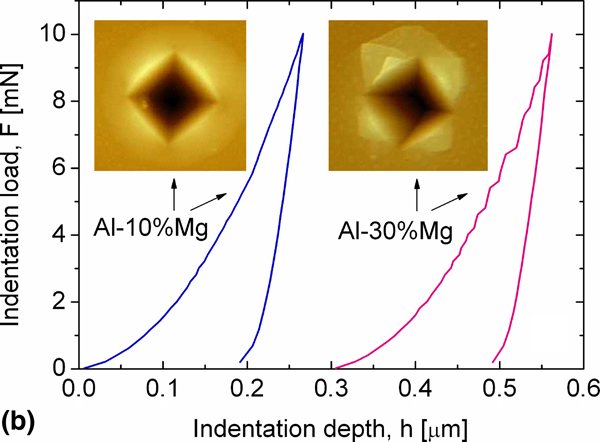Article contents
High strength of ultrafine-grained Al–Mg films and the relevance of the modified Hall–Petch-type relationship
Published online by Cambridge University Press: 27 August 2019
Abstract

Composition-dependent microstructure and mechanical properties of ultrafine-grained Al and Al–Mg films fabricated by DC magnetron sputtering with the novel micro-combinatorial technique were studied by transmission electron microscopy, atomic force microscopy, and nanoindentation. It was revealed that these films have extremely high strength, enabling their potential application as protecting layers. Besides the possible practical applications, the results of the present work also confirm the validity of the modified Hall–Petch relationship for the uniform description of the strength of face-centered cubic metals and solid solution having ultrafine-grain size.
- Type
- Research Letters
- Information
- Copyright
- Copyright © The Author(s) 2019
References
- 3
- Cited by




